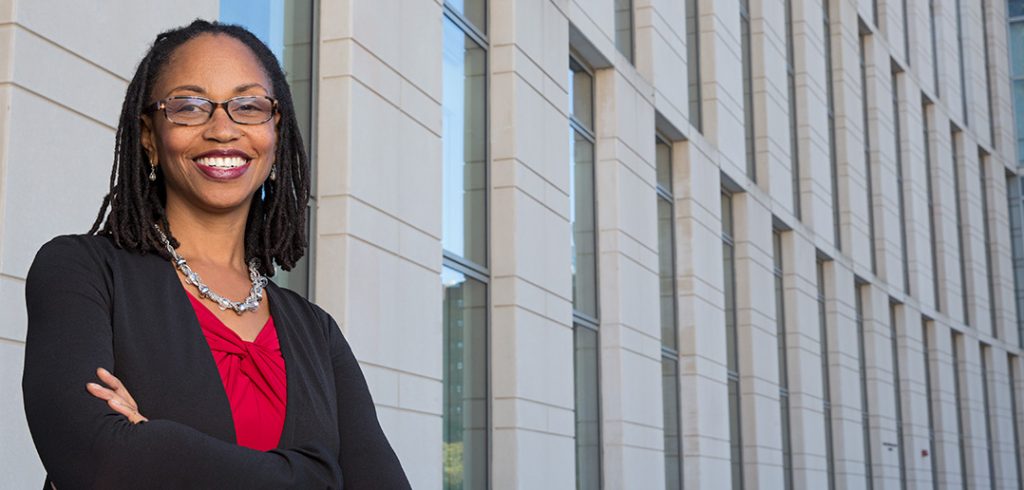In America today, racial injustice stems from more than just the prejudices of individuals. Rather, it is baked into our society’s very laws, policies, and practices, according to Robin Lenhardt. Addressing this deeply rooted problem is the work of the Center on Race, Law & Justice, established last February at Fordham Law School. As the center’s faculty director, Lenhardt and associate directors Tanya K. Hernández and Kimani Paul-Emile are bringing diverse disciplines together for scholarship and innovative thinking about racial inequities.
Why establish the center at Fordham?
We thought it was important not only for a law school but for Fordham Law, which has a history of working on social justice issues, to try to create solutions for the race-related problems we’re seeing in our society. We have some of the most respected and well-published scholars on race in the country, and we wanted to bring our faculty to the table to advance the national conversation we’re having about race and inequality.
What is the role of the center?
The center focuses on the ways in which law not only can be a solution for racial inequality and discrimination but can also work to structure that very inequality. We get at that through scholarship, discourse, policy, and collaborations that look domestically but also globally at issues of race and inequality. We’re also trying to improve legal pedagogy, how we’re preparing students for the diverse society in which they live. And we’re interested in partnering with law firms, institutions, and leaders to address issues of access and opportunity within our profession.
How does the law contribute to discrimination?
We think of the law as something that resolves problems of discrimination. But it has historically worked to structure inequality as well. Think about anti-miscegenation laws, which served to create and reinforce racial categories and prohibited African Americans from marrying whites. Or think about housing and mass incarceration. The law has worked to structure inequality in ways that we often don’t appreciate.
How would you respond to the idea that we live in a post-racial society?
Many people take the fact that we’ve had an African-American president as evidence that race and racial inequality are artifacts of the past. But you need only look at our communities to see that race still matters. We remain heavily segregated as a nation. Indeed, many schools are as segregated as they were before Brown v. Board of Education.
What’s the focus of your scholarship?
I focus on issues of belonging, family, and inequality, and try to understand how race operates across multiple contexts and affects opportunities we experience within them.
You’ve also written about the value of race audits. What are they?
The race audit is an opportunity to involve community members and localities, in particular, in trying to identify and address the sources of racial inequality. We usually think about communities as the canary in the mine, like Flint and Ferguson, protesting and signaling that there’s a problem. But too often we don’t see them as problem solvers. The race audit tries to change that, to create communities of inquiry that involve everyday people working together in a common enterprise focused on racial change and understanding.
Are your students interested in the issues the center raises?
Fordham students are amazing. In my courses, that really comes across in their commitment to the materials and their openness to talking about race. I have students from all walks of life and all ideologies who deeply want to engage with what are some of the hardest issues of our time. I love that and admire them for it.
Edited and condensed from an interview with Stephen Eichinger

